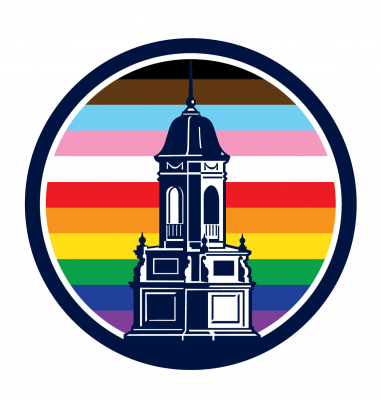On October 24th, about 25 people gathered for the first DHMS Meet & Greet at the Humanities Institute’s new library location. Representing different campus groups, including librarians, professors, graduate students and one undergraduate, the group discussed how to build our fledgling community, how to obtain training in digital tools, and how to translate familiar methods of scholarly inquiry and venues of publication into digital formats. Brendan Kane gave a superb and inspiring presentation of his “Project in Process”: “Reading Early Modern Irish” with the help of interactive texts in the original and in translation, complete with grammatical and lexical references built by an international network of scholars. While political issues surrounding the use of social media, for example, were on many peoples’ minds – what happens to privacy? – one particular question stuck with me: who is my potential audience outside of print formats? Indeed: how DO you determine, find, and even secure an audience for your scholarly blog, your tweets, your online exhibition or your video?
In print venues, the path from author to readership is pretty much set in stone or paved in concrete: you present your research paper to small audiences at various conferences, in addition to soliciting responses from your peer reading networks or teaching some of the content in your classes. Following feedback and rewrites, you submit your article to an established, peer-reviewed journal, and, upon some more revision, the journal publishes your work. Voilà, your print article is available to those who subscribe to the journal or who search specific databases for your topic. Unless your publisher presents your article – or your book – to a larger public via open access platforms, your audience is limited to closed infrastructures. At the same time, you can rely on thorough quality control and on tapping into an established brand within your field. You know scholars in your field read the journal. There are slight deviations of this path, but this is essentially it. Ah yes, and then there are copyright issues and monetary transactions. But that’s not for this blog post…
Digital venues, in contrast, offer a MUCH bigger audience – a website or blog with, potentially, a global audience, and your social media accounts can invariably be found on the internet. So how do you reach those you seek to speak to or with whom you would like to engage in conversation? The Chronicle’s ProfHacker is a solid source for these sorts of questions, with Ryan Cordell addressing the benefits of tweeting, and Lee Skallerup Bessete reflecting on how twitter usage has changed over the years. For starting your academic or scholarly blog, InsideHigherEd published Liana Silva’s recommendations, while Pat Thomson’s recent article in the Times Higher Ed points to more selfish reasons to start your own blog: improving your writing. Of course, there is a top-10 list for this new enterprise as well, in this case assembled by Tom Crick and Alan Winfield. And it is always instructive to study some of the best, as curated and presented by Alexis Madrigal in 2013.
Most of these authors point to one important element of establishing an audience, no matter what part of your research you make available or which venue or medium you choose: you should not engage one without the other. If you are blogging, let others know on twitter or other social media that you just published a new post. Read others’ posts. Follow others on twitter. Mention your just-out print book on your blog or add the link to your twitter account on your website. You don’t just seek an audience – you also become one. You don’t just build networks within your research community and audiences “out there” that may find your work interesting – you also network within audiences yourself. So, it’s really not that different from print, it’s just much bigger and much more public. As Bianca Elena Ivanof and Caspar Addyman argue: it’s how to be an academic in the 21st century. Thank you, everyone, for coming on Monday!

